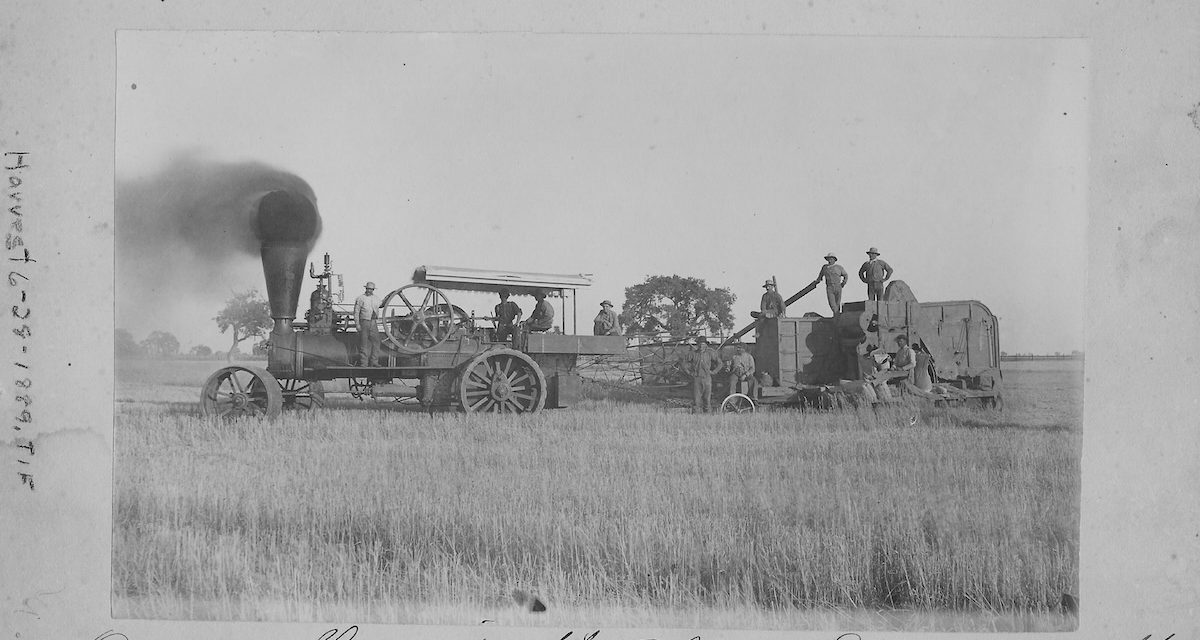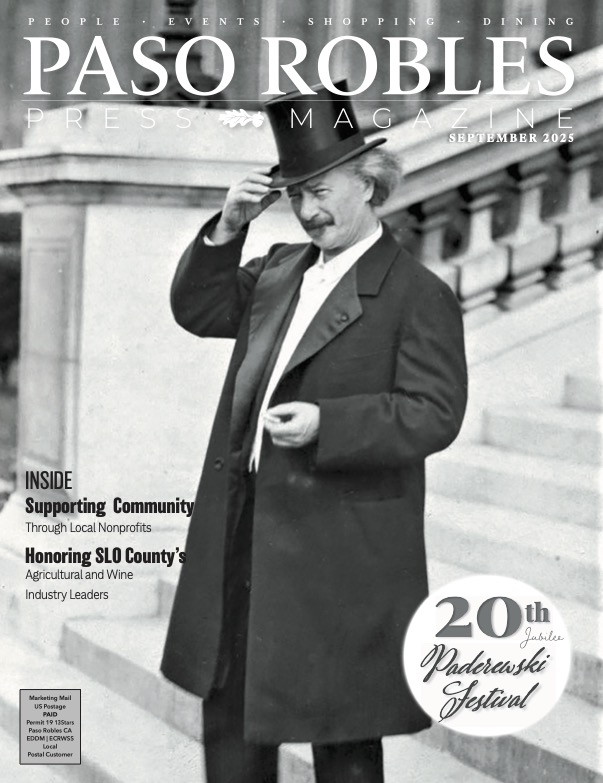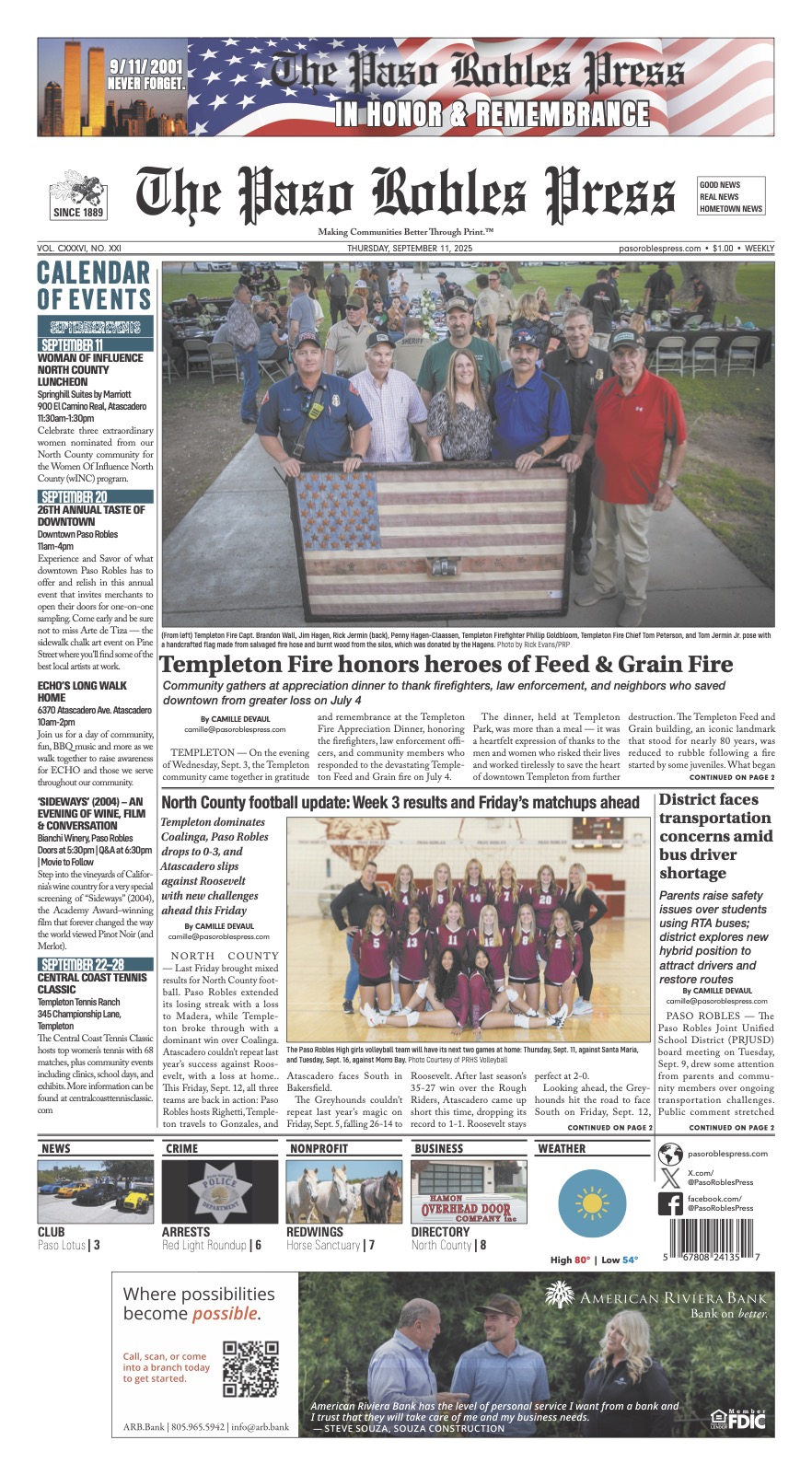By Camille DeVaul and the Paso Robles Area Historical Society and Museum
Agriculture in North San Luis Obispo County has a rich and varied history, dating back to the late 18th century. The Franciscan friars, who established Mission San Miguel Archangel in 1797, were among the first to introduce farming to the region. They, along with the Salinan people, cultivated the land, making Mission San Miguel one of the most productive missions in California.
The secularization of the missions in 1835 led to the distribution of mission lands into Mexican Land Grants. Landowners focused primarily on cattle grazing, as the region’s lack of transportation limited access to outside markets. Consequently, the value of livestock was primarily in hides, wool, and tallow. Early settlers, unfamiliar with the climate variations, did not store hay or feed for dry years. This inexperience proved costly during the drought from 1862 to 1864, when many cattle starved, prompting landowners to shift towards cultivation.
By the mid-1800s, the demand for flour soared, and wheat farming became prevalent. The Estrella Plains gained a reputation for their production of wheat and barley. However, the Panic of 1893, a severe economic depression, significantly impacted the region. Crop and livestock prices plummeted, and a severe drought in 1898 further devastated farmers and ranchers. Those who endured these hardships eventually began to recover as the turn of the century approached.
Early homesteaders experimented with various crops, finding almonds particularly suited to the local climate. By 1918, Paso Robles was recognized as the “Almond Capital of the World,” with the largest almond orchards globally within a 40-mile radius. However, almonds were not the only crop to flourish in the region. The Franciscan missionaries introduced wine grapes, known as “Mission Grapes,” to the area around 1797. These grapes yielded a sweet but harsh red wine that often turned to vinegar due to low tannic acid levels.
The wine industry received a boost in the 1870s when the phylloxera epidemic devastated French vineyards, leaving American vines unaffected. In 1886, Gerd and Ilsabe Klintworth planted a vineyard in the Geneseo/Linne area, selling zinfandel, port, muscatel, and some of the first white wines in the region. Ignace Jan Paderewski significantly contributed to the region’s viticulture after arriving in 1913. He purchased extensive land west of town, planting Zinfandel wine grapes, almonds, and various fruit trees. Paderewski’s innovative farming methods and passion for winemaking helped transform Central Coast agriculture. By the late 1960s and early 1970s, the wine industry was expanding significantly.
The Franciscan missionaries also introduced olive trees to California in the late 1700s, planting them at 19 of the 21 missions along the El Camino Real. As almonds became susceptible to freezes and labor costs rose, farmers turned to olives. Olives, which bloom later in spring, are more resistant to frost and can withstand the region’s hot, dry climate.Olive production boomed in San Luis Obispo County beginning around 2002, with approximately 1,300 acres dedicated to olive trees.
From the Franciscan friars and early homesteaders to the transformation through droughts, depressions, and shifts from cattle to wheat, almonds, grapes, and olives, the region has continually evolved. Today, North County stands as an agricultural leader on the Central Coast, its history a testament to the enduring spirit of its people and their ability to thrive amidst challenges.
PASO ROBLES PRESS MAGAZINE
Copies of Paso Robles Press Magazine are directly delivered to 23,000 readers in zip codes 93446, 93451, and 93465 and 2,000 dropped with support from advertisers and subscribers. Together, we are Making Communities Better Through Print.™
To subscribe or advertise, click here.











